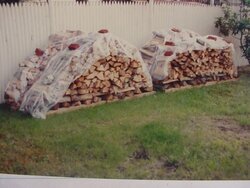I got an idea from bogeydave's posts that I'm gonna test on my woodpiles. I have some 4 mil clear plastic 10'x 25' sheets.
If I completely cover my piles with this plastic I should get a greenhouse effect on hot sunny days that will draw out moisture onto the under sice of the plastic. I can then flip the plastic every week to restart the cycle.
Anybody ever do this already ?
If I completely cover my piles with this plastic I should get a greenhouse effect on hot sunny days that will draw out moisture onto the under sice of the plastic. I can then flip the plastic every week to restart the cycle.
Anybody ever do this already ?


